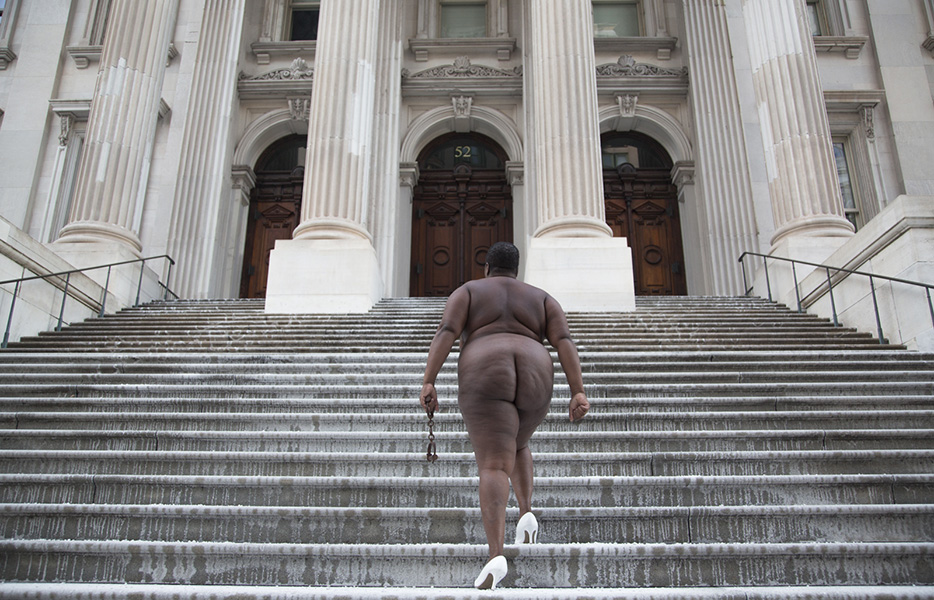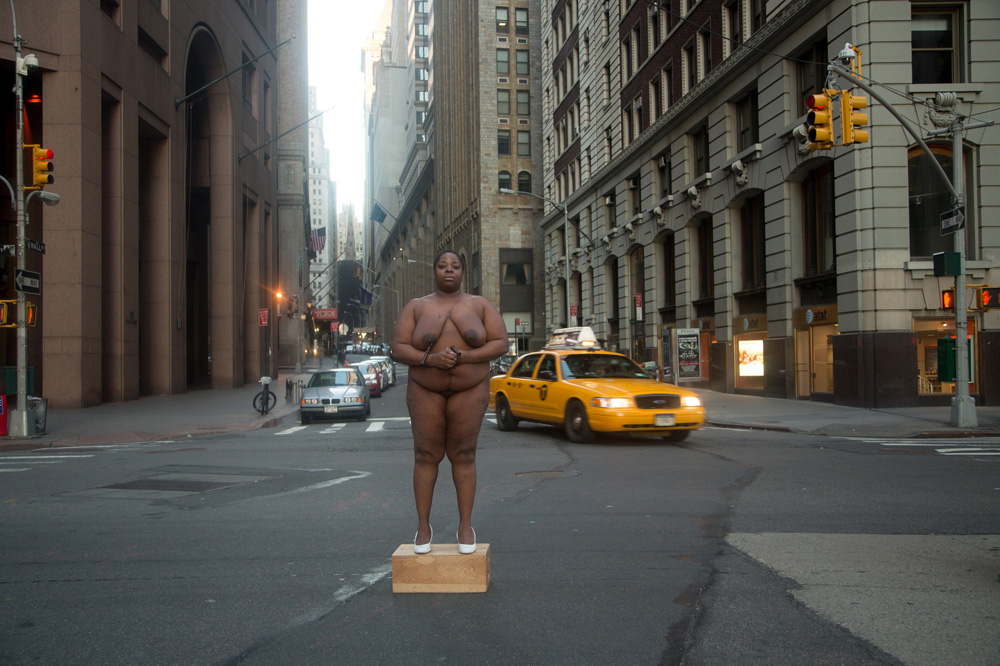HISTORY IS NOT THE PAST
By Jorge Alberto Perez
For Nona Faustine the restitution of her sense of wholeness as an African American woman and artist manifests in the guise of a restoration of the past, emphasis on guise. Although we see her marching up the steps of City Hall in Manhattan with nothing on but her white Sunday shoes and a pair of shackles in her left hand…she is not really trying to restore anything. It took me a while to realize it.
Her on-going photography and installation project Reconstructions is precisely that – reconstructions that attempt to replace something that was lost in the history of Blacks in America. This should not be confused with an attempt to relive the past through reenactment. Faustine’s images are more like markers that indicate a place, an institution, an event or a person so that with her presence on that spot she does not merely remember them for the sake of remembering, she rewrites a new history for them. There on the steps of City Hall’s Renaissance Revival facade that abuts a slave burial ground or standing on her soap box at the intersection of Water and Wall Streets where a market once trafficked in humans, she is the fearless daughter of them all, the new Venus of Willendorf reborn to reconstruct a history, the ultimate act of fecundity.
Faustine easily acknowledges the impossibility of getting at what is essential with this task she has set for herself, because to reconstruct a history is an altogether different action than to restore one. Hers is not an attempt to historicize the present but to re-write the past. She did the research, discovered who bought and sold black slaves in colonial New York, and where, and how they were transported in and out of the city. But there is no Aushwitz or Treblinka for the victims of slavery in America despite the common knowledge that an estimated 10-12 million Africans died in the Middle Passage alone, and countless others succumbed to starvation, physical abuse and disease once on these shores. In a way the images function as memorials that she makes herself, one at a time, with her body, the naked truth of its blackness braced against a cold city, reconstructing a narrative where the enslaved has dignity and is not afraid.
http://jorgealbertoperez.


